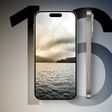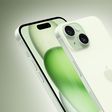Apple's new Vision Pro headset can serve as an external display for a Mac, allowing you to view and control your computer in a visionOS window. The feature is even compatible with some older Intel-based Macs, with one limitation.

In a new support document, Apple has confirmed that the Vision Pro's Mac Virtual Display feature is compatible with any Mac running macOS Sonoma. If the Mac has an Apple silicon chip, the headset can show its display at up to 4K resolution. If the Mac has an Intel processor, however, Apple says resolution is limited to up to 3K.
macOS Sonoma is compatible with the following Macs:
- MacBook Pro: 2018 and later
- MacBook Air: 2018 and later
- Mac mini: 2018 and later
- iMac: 2019 and later
- iMac Pro: 2017
- Mac Studio: 2022 and later
- Mac Pro: 2019 and later
To use the feature, the Vision Pro and the Mac need to be signed in to the same Apple ID, and the account must have two-factor authentication turned on. In addition, Wi-Fi and Bluetooth must be enabled on both devices to establish a connection.
If you look at a MacBook while wearing the Vision Pro, a "Connect" button will appear above it. For desktop Macs, or if the button fails to appear, Mac Virtual Display can also be turned on in the Vision Pro's Control Center.
You can move your Mac's virtual display by pinching and dragging the window's bottom bar, and bring it closer or farther away. You can also resize the window by pinching and dragging the window bars that appear in the bottom corners.
If your Mac has multiple external displays connected to it, the Vision Pro only shows the one set as the main display in the Mac's System Settings app.
You can use your Mac's built-in keyboard and trackpad, or a paired Bluetooth keyboard and trackpad, to control both the Mac Virtual Display and other visionOS apps. However, the Vision Pro cannot be used with a Bluetooth mouse, according to Apple.
Apple's instructions for turning on Universal Control:
If you want to share the pointer between your macOS and visionOS apps, Handoff must be turned on on both devices. On Apple Vision Pro, go to Settings > General > Handoff. On your Mac, go to System Settings > General > AirDrop & Handoff.
On your Mac, you also need to turn on "Allow your pointer and keyboard to move between any nearby Mac or iPad." Go to System Settings > Displays, then click Advanced.
A few other details shared by Apple:
- Mac Virtual Display does not work when your Vision Pro is in Guest Mode.
- Mac Virtual Display does not support managed Apple IDs.
- The devices must be no more than 10 meters (32 feet) apart to maintain a connection.
More details about Mac Virtual Display can be found in Apple's Vision Pro User Guide.






















Top Rated Comments
Similarly, if RAM or Storage went bad in Intel Macs, some models could facilitate replacing the broken part and continuing to use your Mac. Now, when anything at all conks in a Silicon Mac, you throw the whole thing out and buy another.
Intel Macs could also run full Windows instead of emulated ARM Windows (which is not full Windows), making it the only computer type in the world that could natively run BOTH major platforms in one case (excluding hacks). This also meant that a single computer purchase could run just about ALL of the world's software instead of only a relatively tiny subset of it. This included easy access to AAA games and various gaming platforms on the Window-only side. Those consumers who need Windows but wanted Mac could buy a Mac and get BOTH. Now we're back to if you need Windows, you have to buy a PC unless maybe ARM Windows emulation is good enough.
It generally had a focus on Power vs PPW, so it could generally get computing tasks done faster by using more power... instead of slower while sipping power. The difference in net power usage was marginal as the former would average about a single incandescent light bulb or two's power usage each month, meaning nobody saw any huge difference in an electric bill by opting for PPW over Power. But "we" sure make it sound like it's an Apples to Oranges proposition.
Like Spotify before Apple Music or Google Maps before Apple Maps or the LG 5K monitor before ASD, when Apple was embracing Intel, fans loved Intel Macs. Then when Apple abandoned them, fans turned. Suddenly, there were all these flaws that were left unspoken while Macs depended on them but then were relentlessly spoken when Apple wanted people to buy Silicon. Suddenly laps were "suffering third degree burns", fans were "sounding like jet engines", etc.
Intel cost the so-called "Intel Premium" that Silicon would alleviate, except no pass through savings seemed to appear. Instead, Apple's corporate margin fattened, from the traditional 39%-40% to now around 46%-47%. How long until about HALF of every dollar we pay for Apple stuff is falling into the corporate vaults instead of going directly towards the thing we are buying? Hooray for shareholders! Can consumers get a bone or two?
Intel generally offered annual hardware upgrades and Silicon offered the potential of at least the same, but it didn't work out that way for the latter, while Intel has generally continued with the old, roughly annual pace. "We" blamed that on covid & supply chain, etc and maybe that was the cause... except Intel seemed to roughly stay on the traditional pace of new generations.
Intel Macs offered the ability to connect powerful graphics cards in external boxes while Silicon offers its own graphics and only its graphics... even in Mac Pro. Because of robust competitive forces, an Intel Mac Pro could have a ton of relatively cheap, massive RAM while a Silicon Mac Pro can only max out at a RAM amount of Apple's choosing... at thoroughly exploitive pricing vs. market... as is always the case when there is only a LONE seller of anything.
In short, while I can appreciate my own Silicon Mac and use it every day, we had many great benefits with the prior platform. Silicon offers several advantages but so does Intel. Chief amoung them is Power (and Graphics Card Power) vs. PPW and integrated Apple Graphics. In general, PC will use more power to get computing done FASTER while Silicon will use much less power to get things done slower. On the flip side, the latter can have longer battery life than the typical person can use in a day, while the former can burn through its battery in as little as a few hours if the task is demanding.
We Apple people shifted from a mainstream platform with massive competitive-driven support back to a PowerPC-like silo where all key roads must lead to/through Apple Inc. As objectively as I can assess it, I don't know if the pros fully outweigh the cons unless one chooses to make the pros bigger deals while marginalizing the cons. The vast majority of the world happily runs on PC platforms. Our little bubble now happily runs on Silicon... at a steep relative premium.
Yes, no doubt we can be critical of the Intel platform. I can readily talk about heat and shorter battery life, etc. too. On the other hand, having both full Windows and Mac in one box was tremendous utility for a Working Mac professional who generally NEEDS Windows but wants Mac. Full Windows is full Windows. ARM Windows may or may not work depending on the app. The complete solution now is back to lugging either 2 laptops or buy a Windows laptop (the one typically needed) and use the Mac when you get back to home or office... UNLESS a client or company is Mac centric themselves.
Typical Apple ?
Your other points are all valid, but this one needed to be clarified. Those chips run so hot in the MacBooks they throttle very quickly, precisely because that era of Intel didn’t deliver (for almost a decade) the TDP envelope their roadmaps promised. They just upped the power consumption yoy.